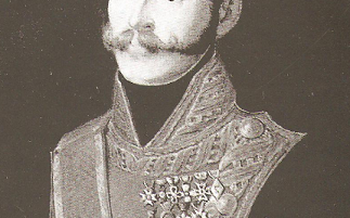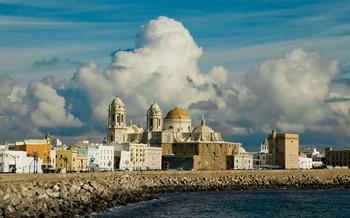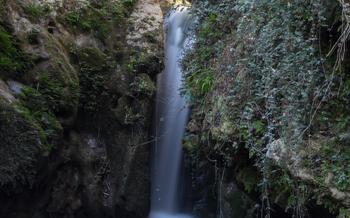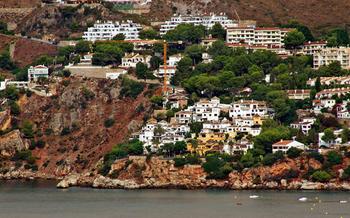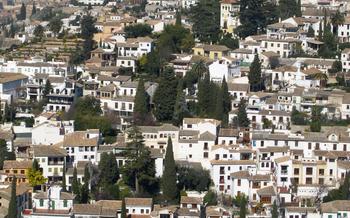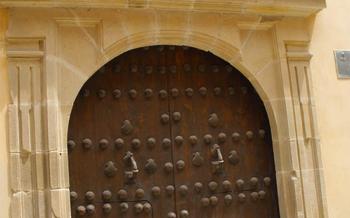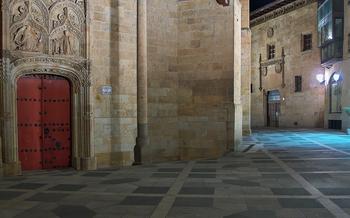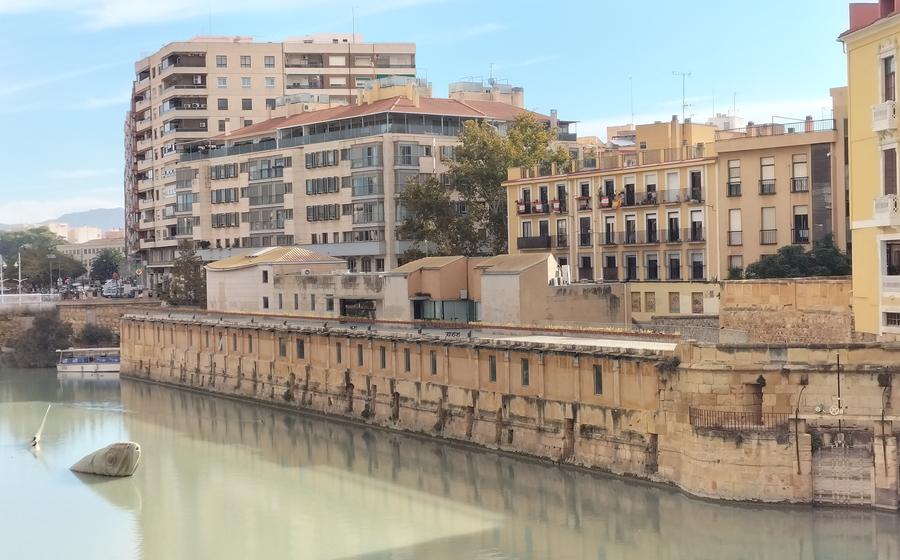
Museo de la Fiesta in Mula
- Museo de la Fiesta in Mula
- Historical Significance of Mula
- Mula's Fiestas
- Carnaval de Mula: A Vibrant Celebration of Extravagance and Tradition
- Semana Santa
- Moros y Cristianos
- Exhibitions and Displays
- Guided Tours
- Workshops and Activities
- Souvenir Shop
- Accessibility and Facilities
- Dress Code and Etiquette
- Photography and Social Media
- Nearby Attractions
Museo de la Fiesta in Mula
The Museo de la Fiesta in Mula is a captivating museum that offers a glimpse into the vibrant history and traditions of this charming town in the Murcia region of Spain. Housed in a beautifully restored 18th-century palace, the museum showcases a unique collection of traditional costumes, accessories, and artifacts that tell the story of Mula's rich cultural heritage. Visitors are transported back in time as they browse through the museum's exhibits, which bring to life the town's most important festivals and celebrations.
The Museo de la Fiesta is located in the heart of Mula, just steps away from the town's main square. It is easily accessible by car or public transportation, making it a convenient destination for both local residents and visitors.
Historical Significance of Mula
Mula's rich history and cultural heritage date back to ancient times. The town's strategic location on the banks of the Mula River and at the crossroads of important trade routes made it a significant settlement throughout history. Mula played a crucial role in the defense of the Murcia region, serving as a frontier town against various invaders, including the Carthaginians, Romans, and Moors. During the Middle Ages, Mula flourished under Moorish rule, becoming a center of agriculture, trade, and culture. The town's medieval castle, built in the 13th century, stands as a testament to its strategic importance and architectural heritage. Mula's cultural legacy is further enriched by its vibrant festivals and traditions, which have been passed down through generations and continue to shape the town's identity.
Mula's Fiestas
Mula's vibrant cultural heritage is showcased through its numerous fiestas and celebrations, which attract visitors from across the region. Each fiesta is unique, offering a glimpse into the town's history, traditions, and customs.
The Carnaval de Mula is a riot of color and creativity, featuring elaborate costumes, parades, and street performances. The Semana Santa processions during Holy Week are solemn and religious affairs, with historical significance and cultural importance. The Moros y Cristianos festival reenacts the epic battles between Moors and Christians, complete with elaborate costumes, parades, and mock battles.
Other notable fiestas include the Fiestas Patronales in honor of the town's patron saint, the Romería de la Virgen de la Fuensanta, and the Feria de Mula. Each fiesta has its own unique traditions and rituals, creating a rich tapestry of cultural expression in Mula.
The annual schedule of festivities is packed with events, ensuring that there is always something to experience. Visitors can immerse themselves in the vibrant atmosphere, enjoy the music, dance, and traditional performances, and savor the delicious local cuisine that is a staple of every fiesta.
Carnaval de Mula: A Vibrant Celebration of Extravagance and Tradition
The Carnaval de Mula, held every year in February or March, is a vibrant and colorful explosion of creativity and tradition. This joyous festival is known for its elaborate costumes, extravagant parades, and energetic street performances that captivate visitors with their infectious energy.
One of the highlights of the Carnaval de Mula is the Gran Desfile de Carnaval, a grand parade that showcases the incredible craftsmanship and artistry of the local artisans. Participants don intricate and colorful costumes, many of them handmade, representing a variety of themes and characters. The parade winds its way through the streets of Mula, accompanied by lively music and enthusiastic crowds cheering and dancing along the route.
Another unique tradition associated with the Carnaval de Mula is the Entierro de la Sardina, or the "Burial of the Sardine." This symbolic ceremony, held on the final day of the festival, represents the end of winter and the welcoming of spring. A large sardine effigy is carried through the streets in a mock funeral procession, accompanied by mourners and revelers. The effigy is then symbolically burned, marking the transition to the new season.
The Carnaval de Mula offers a truly immersive and unforgettable experience, allowing visitors to witness the town's rich cultural heritage and vibrant traditions firsthand. Whether you come to admire the stunning costumes, enjoy the lively parades, or simply soak up the infectious atmosphere, the Carnaval de Mula is a must-see event for anyone seeking a colorful and authentic Spanish fiesta.
Semana Santa
During Holy Week, the streets of Mula transform into a solemn procession of faith and devotion. This religious festival holds immense historical significance and cultural importance for the town. The processions, with their intricate floats and traditional costumes, are a sight to behold. Each brotherhood carries its own float, adorned with religious imagery and accompanied by marching bands. The atmosphere is reverent and deeply moving, as the community comes together to commemorate the Passion of Christ. Visitors can witness the processions, which take place throughout the week, and experience the unique traditions and rituals associated with Semana Santa in Mula.
Moros y Cristianos
One of the most spectacular events associated with Mula's fiestas is the Moros y Cristianos celebration. This epic reenactment of the battles between Moors and Christians takes place during the month of September and attracts thousands of visitors. The festival features elaborate costumes, parades, and mock battles, bringing history to life in a vibrant and captivating way.
The tradition of Moros y Cristianos dates back to the Middle Ages, when the region of Murcia was under Moorish rule. The festival commemorates the Christian reconquest of the area and celebrates the cultural diversity and rich history of Mula. During the festivities, participants dress in traditional Moorish and Christian attire, showcasing the intricate embroidery and craftsmanship that go into these elaborate costumes.
The highlight of the festival is the mock battle, which takes place in the town square. The two sides engage in a fierce but playful battle, using swords, spears, and other weapons. The battle is accompanied by music, cheering crowds, and a sense of excitement that fills the air.
Moros y Cristianos is a unique and unforgettable experience that offers a glimpse into the history and culture of Mula. It is a vibrant celebration that showcases the town's rich heritage and the passion of its people.
Exhibitions and Displays
The Museo de la Fiesta boasts an impressive collection of exhibits that bring Mula's vibrant festivities to life. Visitors can immerse themselves in the town's rich cultural heritage through a diverse range of displays. Highlights include elaborate costumes worn during the Carnival and Semana Santa processions, intricate masks and accessories, and historical documents that provide context to the town's traditions. Interactive elements and educational panels enhance the experience, offering visitors a deeper understanding of the significance and symbolism behind each fiesta. The museum's collection is a testament to the artistry, craftsmanship, and devotion that characterize Mula's celebrations, making it a must-see for anyone interested in Spanish culture and traditions.
Guided Tours
The Museo de la Fiesta in Mula offers guided tours in various languages, including English, Spanish, French, and German. These tours provide visitors with an immersive and informative experience, as knowledgeable guides share insights into the history, traditions, and significance of the exhibits. During the tour, visitors can learn about the unique costumes, accessories, and cultural practices associated with Mula's fiestas. Guides also provide anecdotes and historical context, bringing the exhibits to life and enhancing the visitor's understanding of Mula's rich cultural heritage. Visitors can book guided tours in advance through the museum's website or by contacting the museum directly. Tour schedules vary depending on the season and availability, so it's recommended to check the museum's website or call ahead to confirm tour times.
Workshops and Activities
The Museo de la Fiesta offers visitors the chance to immerse themselves in the local culture through hands-on workshops and activities. These experiences provide a deeper understanding of the traditional crafts and customs associated with Mula's fiestas.
One popular workshop is mask-making. Participants learn the art of creating intricate and colorful masks, a key element of the Carnival celebration. Under the guidance of skilled artisans, visitors can craft their own unique masks to wear during the festivities.
Another highlight is the embroidery workshop. Mula is renowned for its beautiful embroidered costumes, and visitors can try their hand at this delicate craft. They can learn the traditional stitches and techniques used to create these intricate designs.
For those interested in dance, the museum offers classes in traditional folk dances. Visitors can learn the steps and rhythms of these lively dances, which are an integral part of Mula's fiestas.
These workshops and activities are a fantastic way to connect with the local culture and gain a deeper appreciation for the traditions of Mula. They provide a unique opportunity to learn from experts, create lasting memories, and take home a piece of the town's rich cultural heritage.
Souvenir Shop
Within the Museo de la Fiesta in Mula, visitors will find a charming souvenir shop that offers a delightful selection of unique mementos and locally-made crafts. These treasures provide an opportunity to take a piece of Mula's rich cultural heritage home.
From intricately embroidered textiles and ceramic pottery to hand-painted masks and traditional musical instruments, the souvenir shop is a treasure trove of authentic souvenirs. Visitors can support local artisans and preserve cultural traditions by purchasing these handmade items.
Whether you seek a colorful reminder of your visit to Mula or a thoughtful gift for loved ones back home, the museum's souvenir shop has something special for everyone. Every purchase not only supports the museum but also contributes to the preservation of Mula's vibrant cultural identity.
Accessibility and Facilities
The Museo de la Fiesta in Mula is committed to providing an inclusive and accessible experience for all visitors. The museum features a variety of accessibility features to ensure that everyone can enjoy the exhibits and participate in the activities.
Wheelchair ramps and elevators provide easy access to all levels of the museum, making it easy for visitors with mobility impairments to navigate the space. Accessible restrooms are also available for the convenience of visitors.
The museum staff is trained to provide assistance to visitors with disabilities and is happy to answer any questions or provide additional support. Visitors who require assistance are encouraged to contact the museum in advance to make arrangements.
In addition to its accessibility features, the Museo de la Fiesta offers a variety of amenities to enhance the visitor experience. These amenities include a gift shop where visitors can purchase souvenirs and locally-made crafts, as well as a café where visitors can relax and enjoy a snack or beverage.
The museum also provides parking for visitors, including designated spaces for visitors with disabilities. Parking is free of charge and is located within easy walking distance of the museum entrance.
Dress Code and Etiquette
Respectful behavior and appropriate attire are essential when visiting the Museo de la Fiesta in Mula, as it is a place of cultural significance and heritage. Visitors should dress modestly and avoid wearing revealing or offensive clothing. It is important to be mindful of local customs and traditions, and to behave in a manner that is respectful of the museum's exhibits and staff. Refrain from touching or handling any artifacts or displays without permission. Photography and videography are generally allowed, but always ask for permission before taking photos of other visitors or museum staff. Remember to be considerate of others and maintain a quiet and orderly environment so that everyone can enjoy their visit.
Photography and Social Media
Photography: Visitors are welcome to take photographs for personal use within the museum, but flash photography is not permitted to preserve the integrity of the exhibits. Using a tripod is also discouraged to avoid obstructing other visitors. For commercial photography or professional shoots, prior permission must be obtained from the museum administration.
Social Media: Sharing experiences and promoting the museum on social media is encouraged. Visitors are welcome to take photos and videos and share them on platforms like Instagram, Facebook, or Twitter using relevant hashtags. Tagging the museum's social media handles is appreciated to increase visibility and engagement.
Respect and Privacy: While taking photos or using social media, it is essential to respect the privacy of other visitors and avoid capturing them in your shots without their consent. Permission should be sought if you wish to feature other people in your photos or videos.
Nearby Attractions
Mula is a treasure trove of historical and cultural attractions that extend beyond the Museo de la Fiesta. Embark on a journey through time as you explore the majestic Castillo de Mula, a medieval fortress that once guarded the town. Discover the secrets of the past at the Museo Arqueológico de Mula, where ancient artifacts and exhibits shed light on the region's rich history. Immerse yourself in the natural beauty of the Sierra Espuña Regional Park, with its stunning landscapes, hiking trails, and diverse flora and fauna. Don't miss the opportunity to visit nearby towns and villages, each with its unique charm and cultural heritage. From the picturesque streets of Caravaca de la Cruz to the vibrant markets of Lorca, the Murcia region offers an array of experiences that will leave you enchanted.
